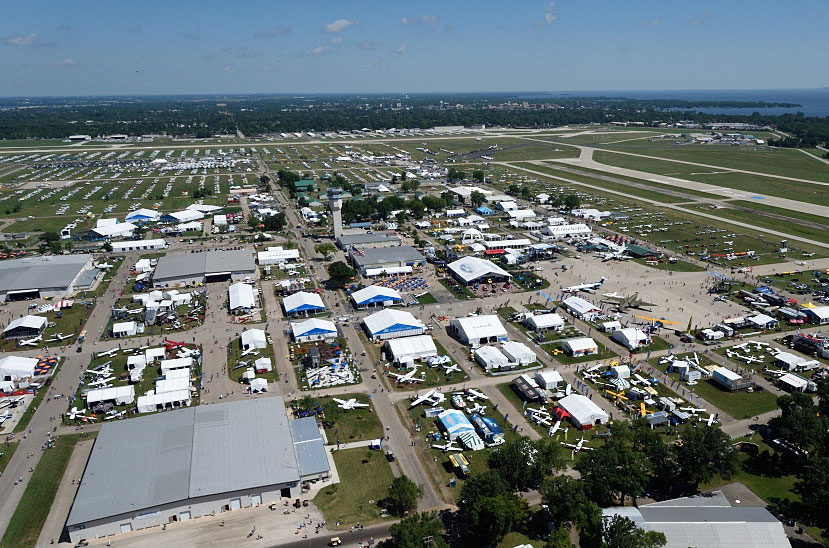Street Smarts
The inspiration behind AirVenture’s street names
Stits Road: Ray Stits
Ray Stits is one of the founding members of the original EAA chapter, Chapter 1, at Flabob Airport in Riverside, California. He is an aircraft designer, a pilot, a mechanic, and a mentor. He created the Stits Process, known more commonly as Poly-Fiber; the Stits Playboy; the world’s smallest monoplane, Junior; and the world’s smallest biplane, the Stits Sky Baby.
Schaick Road: Will Schaick
Will Schaick is a Chapter 252 member and EAA volunteer. He started out working at the gates during EAA AirVenture Oshkosh selling patches and decals. Will went on to found Flightline Operations as well as come up with and carry out a plan to park more than 100 airplanes an hour. In 1987 the Will Schaick Flightline Operations Building was created.
Pelton Parkway: Jack Pelton
Jack Pelton is currently chairman of the board and CEO at EAA. He was previously chairman of Cessna Aircraft Company where he was in charge of jobs such as aircraft design, development, flight test, and certification. He was responsible for the creation of the 728JET aircraft family when he served as senior vice president for engineering and programs of Fairchild Dornier in Germany.
Goyke Avenue: Vick Goyke
Vick Goyke is an EAA member as well as an employee. He works as general chairman of internal security during EAA AirVenture and is responsible for maintaining all 17 gate entrances as well as patrolling the grounds day and night.
Forest Home Avenue
Forest Home Avenue was the name of the street in Hales Corners, Wisconsin, that Paul and Audrey Poberezny lived on when they started EAA. They moved EAA to its first headquarters in Milwaukee in the ’60s, then officially moved to the Oshkosh grounds in 1983 to combine the headquarters with the fly-in site where the site remains today.
James Ray Boulevard: James Ray
James C. Ray was an EAA member, aviator, and veteran. At 18, James witnessed the attack at Pearl Harbor while he was in Hawaii working on construction for the Navy. Shortly thereafter, he enlisted in the U.S. Army Air Forces and served as a B-17 command pilot in England. He flew a total of 30 missions and was lead pilot on a D-Day attack in Normandy, France, on German headquarters. His contributions to EAA helped build the Air Academy Lodge.
Gallatin Avenue: Harold Gallatin
One of the original 100 members.
Wittman Road: Steve Wittman
Sylvester “Steve” Wittman was an air racer as well as an aircraft designer and builder. His pilot’s certificate was signed by Orville Wright in 1924, and he went on to build his first aircraft, the Hardly Abelson, that same year. He’s created Buttercup, Bonzo, and the Wittman V-Witt. He competed in formula V air racing, and now the winners of the Formula V National Championship receive the Steve Wittman Trophy. He was the manager of the Oshkosh airport, which was later named Wittman Regional Airport after him. He was a key player in helping bring the fly-ins to the Oshkosh airport in 1970.
Vern Avenue: Vern Lichtenberg
Member of Chapter 439, Vern was Paul’s maintenance man during his service in the Wisconsin Air National Guard. He later became director of EAA facilities for 29 years and has played a major role in developing the convention and building grounds.
Binder Lane: Binder Farm
Binder Farm is the farm grounds that EAA was started on.
Mulva Way: Jim Mulva
James Mulva is chairman and CEO of ConocoPhillips as well as a pilot. Jim worked with Greg Anderson on an idea for the Young Eagles program that incorporated Phillips 66, creating the Phillips 66 Aviation Young Eagles Fuel Rebate program. He and his wife, Miriam, are both EAA lifetime members.

